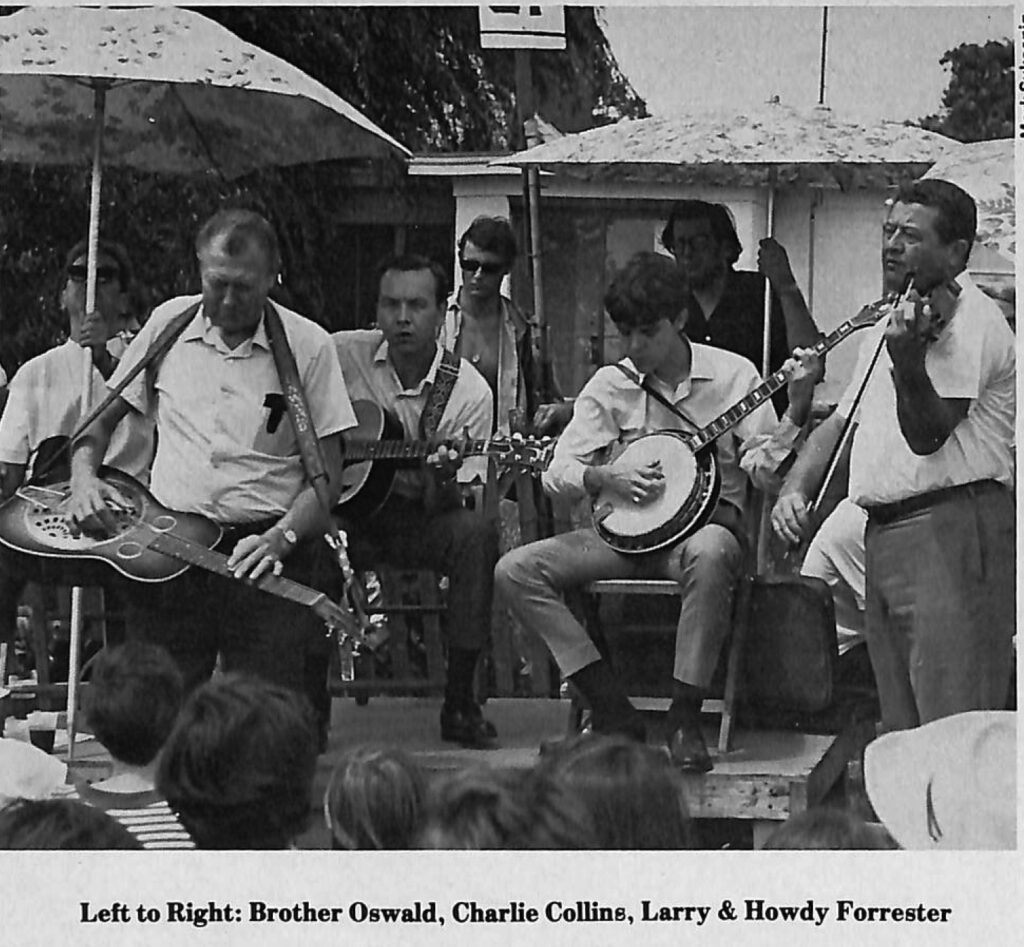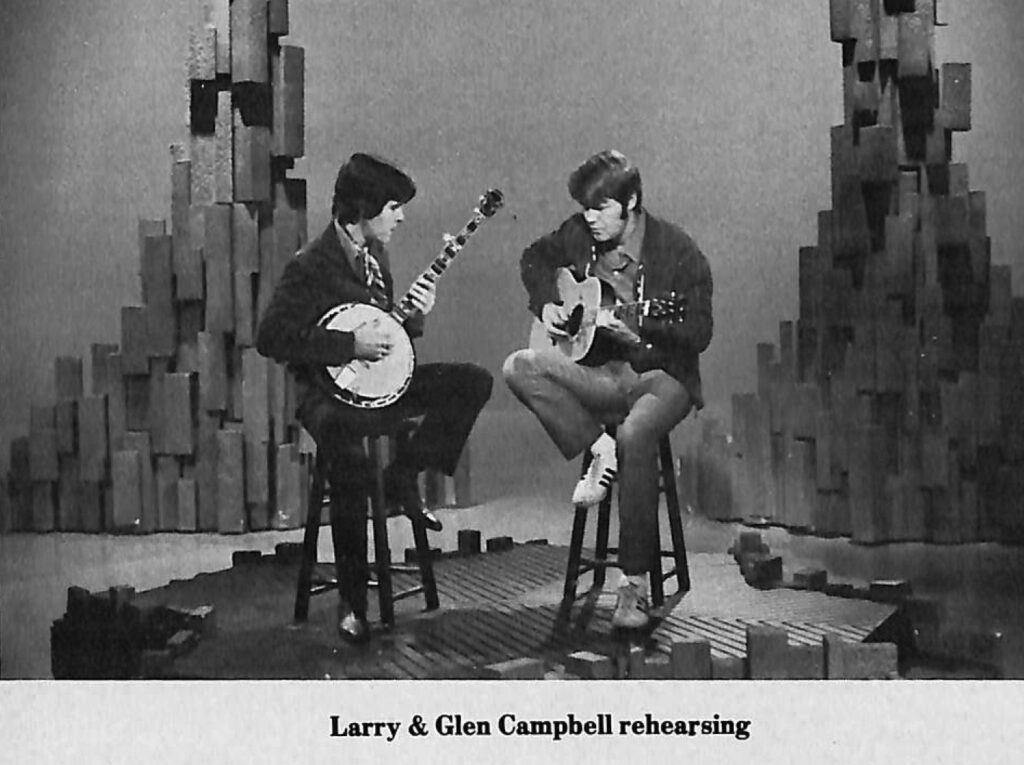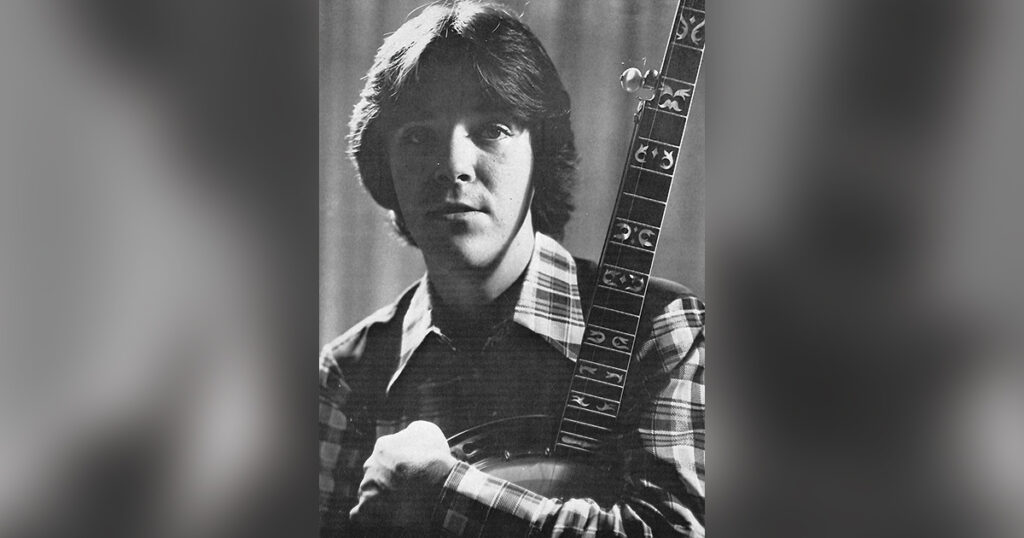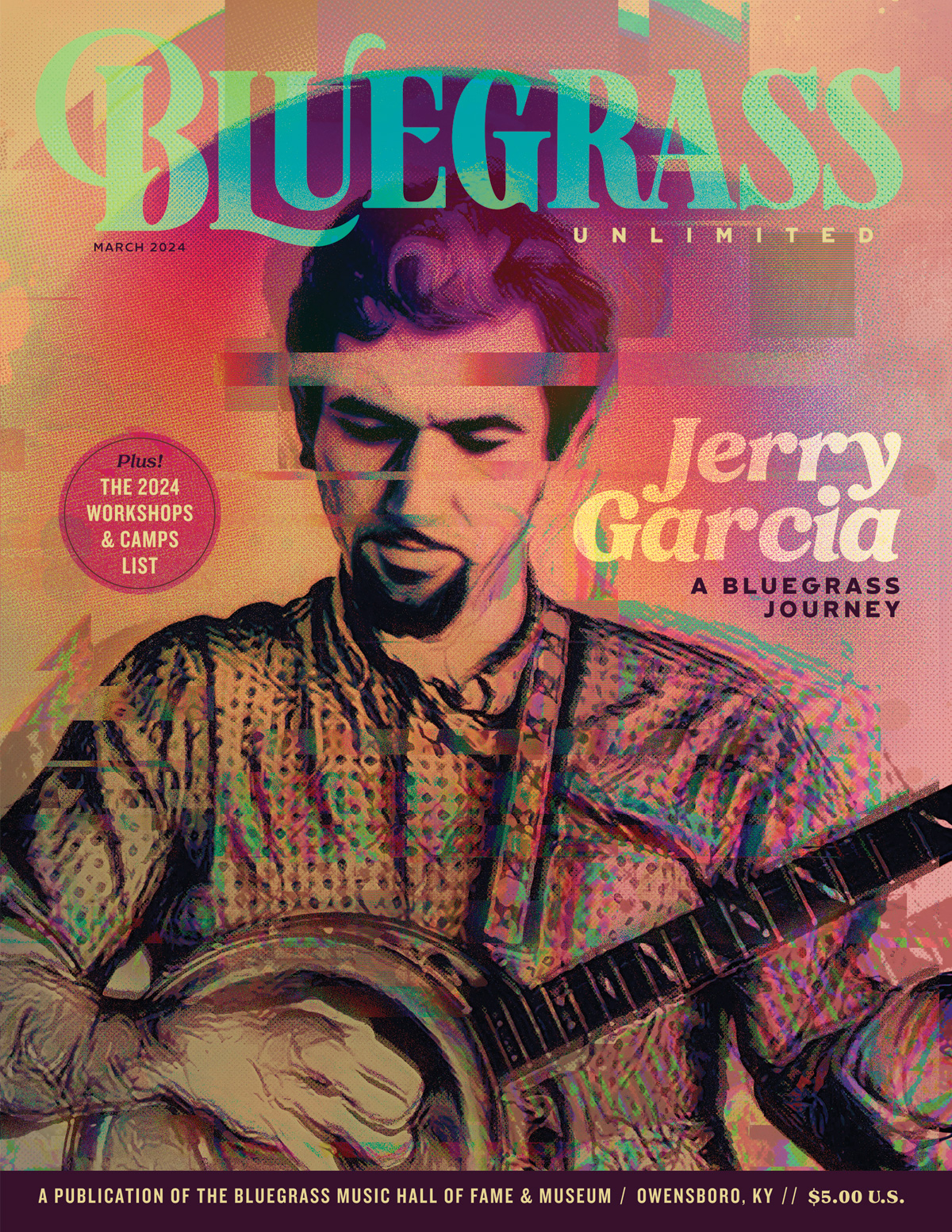Home > Articles > The Archives > Larry McNeely
Larry McNeely
Reprinted from Bluegrass Unlimited Magazine
November 1976, Volume 11, Number 5
I first heard of Larry McNeely, as did many others, via the Glen Campbell television show. Every Sunday evening at eight o’clock, I would rush to our set, with recorder in hand, just to hear the ten minute concert section with Glen, Larry and company. To watch Larry put in all of those tasteful licks with such accuracy while making it all appear so easy, was almost too much for a scratch beginner just getting used to wearing his finger-picks.
What was he doing? How was he doing it? And who was the virtuoso picker, who could work his way through seemingly all obstacles? I would ask myself these questions as I watched his nimble fingers bounce around that fretboard. But, unfortunately, I never came across much information about him; except in reference to McNeely-Style banjo playing. And just to make things more frustrating, there was little, that I knew of, in the way of recordings.
So, having been fortunate enough to correspond with him and his generosity and patience in answering many questions, with 3,000 miles between us, it might lack some of the finer details that a direct conversation would lend. However, I am sure it will offer some long overdue insight into Larry McNeely–banjoist, guitarist, etc.
To bring the annals up to date, I shall start with day one of Larrys’ background history. He was born January 3, 1948, in Lafayette, Indiana. Unlike most successful musicians that had numerous family members to help and inspire them, Larry was the only musical child of three, having two sisters. The only other musical family member was his mother, who played piano and some guitar. Larry recalls hearing her play the guitar and thinking that it “looked like fun”, at which point she bought Larry his first musical instrument.
Even though his first introduction to the banjo was at the age of thirteen, because of not having a banjo for a couple of years, he did not officially take it up until he was fifteen. It was at this age that he heard his first sample of bluegrass music on radio station WCKY, out of Cincinnati, Ohio. The banjo players’ name was Rusty York.
At an early age, Larry decided to go straight into music. He felt, and still does, that in order for an artist to develop to his maximum potential, he must “dive right into it, to the nth degree”.
Like many aspiring banjo players, he concentrated on the styles of Earl Scruggs and Don Reno, while combining both with his own style and ideas. His versions of the instrumentals “Crazy Creek” and “Follow The Leader” are prime examples of this combinative approach he has of assimilating various styles and then adding his own techniques and ideas.
Never having had formal banjo lessons, instruction manuals, or theory study (except that which he learned while playing with others), he relied totally on his ear to figure out the complexities he wanted to play. There is an interesting side note here. With the help of a long-time fiddle playing friend, named Charlie Collins, Larry had figured out the renowned “Devils Dream” note for note, long before hearing the accomplishments of Bill Keith up in the Northeast. However, so as not to add to the Who-Was-First-Keith-Or-Thompson discussion, he is quick to mention that Keith had figured it out much earlier than he.

His first full time professional band job was with the original Pinnacle Mountain Boys. He speaks highly of this band and gives credit to them for driving home the importance of timing.
Some of the performers with whom he was later to work for, in varying durations, include such performers as Jim and Jesse McReynolds, (a one night stand), Red Rector and Roy Acuff. Larry even managed to play once on the Grand Ole Opry with Bill Monroe; having jammed backstage with him on a few occasions.
It was during part of this time that Larry lived with the Charlie Collins family for nearly two years (early 1965 through 1966). It was also during this period with Charlie, that Larry received his job with Roy Acuff, of whom Larry says: “I learned more than I could ever write down on paper”. Some of the tips he picked up were in the areas of timing, facts about the business and stage presence. “Always try to put in your best lick”. He relates this story of how he met and quickly wound up working for Roy Acuff.
“Charlie [Collins] and I were standing out there [near an alley by the Grand Ole Opry] just hanging around with our instruments in December of 1966, when Mac Magaha saw us and remembered a time when we had met. Mac took us back to Roy’s dressing room and asked if we’d like to pick a tune for Roy, which we did. He really liked us a lot. He invited us to come out and pick at Dunbar’s Cave the next Sunday, which we did. I then got a job at the Sho-Bud Guitar Company. A few weeks later, Roy came upstairs of the shop [he had a shop next door and occasionally came up to say “hi” to the guys]. He saw that I was there. He said: “I like to see a guy that works. Would you like to go on a few dates with me?” I said ‘Sure’.”
Hence, Larry became one of the Smoky Mountain Boys. The band included Larry, banjo; Howdy Forrester, fiddle; Jimmy Riddle, harmonica; Charlie Collins, rhythm guitar; Jackie Phelps and Jimmy Lunsford.
Of special mention is Red Rector, who had been a favorite of Larrys’ for quite a while. They met while Larry was living with the Collins family. He gigged with Rector and Fred Smith; “Red and Fred” as they billed themselves. By this time Larry was living in Nashville.
1966 was also the year for a couple of other major events in Larrys’ life. The first being the International 5-String Banjo Championship in West Grove, Pennsylvania. Larry made a note here questioning just how “International” the contest was, but still, it was a major event. His fine rendition of the instrumental, “Shuckin’ The Corn”, was the deciding factor. His arrangement of this tune was later to be one of the few recordings made of strictly his own work, (Glen Campbell presents Larry McNeely, Capitol-ST-674). This recording also contains two of Larrys’ original compositions: “Bethe” and “Banjo Raga #2”.
The other event being a “meeting” that later led to one of Larrys’ biggest “breaks” and the previously mentioned record. While demonstrating instruments for the Dobro Guitar Company of the N.A.M.M. (National Association of Music Merchants) in Chicago, Glen Campbell was in attendance and hanging around one of the displays. The two met and picked for a while. It must have made quite a lasting impression on Glen, for, in September of 1969, he called Larry to see if he would like to play on Glen’s national television show, during the section which fellow banjoist, John Hartford, had previously filled. A friend had received the initial message and when Larry found out about it, he thought his friend was “pulling his leg”. But after finding out that it was on the level, Larry nearly fainted.
Upon acceptance of the job, Larry played the center concert set with Glen. Playing on this show allowed him to spread around his talents not only on banjo, but also on guitar and harmonica, to a much wider audience. He also managed to get in some vocal work.
While working for Glen, Larry had a different type of good fortune. On June 12, 1970, Larry married the then, Elizabeth Maude Harris.
Also in 1970, Larry had a chance to jam briefly with the genius of the late Clarence White. He went over to the house of Byron Berline while Byron and Clarence were playing. They asked Larry to sit in with them. He describes the experience as being “different”.
After the show went off the air, Larry started touring with Glen. In fact, they did so much of it that Larry became worried about ever being at home with his family. So, in the summer of 1972, Larry quit.
Having terminated his commitments with the show, he turned toward doing session work; i.e. sound tracks, commercials, back-up work and even recently managed to get in some acting and playing on the popular television show, “The Waltons”. One of the actors on the show, and friend of Larry’s, John Walmsley, is also a musician on the guitar and harmonica, and has gigged with Larry in the Los Angeles, California area, where Larry now lives with his wife and son, Jean Paul.

Some of the session work has been with such non-bluegrass oriented artists as Burl Ives, Roger Williams and Kay Starr. Aside from the two Capitol albums and a single release (the last two being of guitar and vocal work) there regrettably is little in the way banjo discography information. However, there are a couple of banjo cuts on a Roy Acuff album called “Opry Favorites” and a version of “Dueling Banjos” on a Roger Williams release.
Although two previously planned banjo albums never materialized at the time of this writing, there is a prospective deal being sought in the form of an all banjo playing record.
To show his objective attitude toward the role and abilities of the banjo, one of his most recent endeavors has been that of playing with flamenco Guitarist, friend and partner, James O’Hare; who is from Northern California. Having played together now for almost a year, they have formed a very strong working combination and friendship; with each ones musical ideas complimenting the other. Their most recent accomplishment, besides playing in and around the California area to enthusiastic audiences, has been that of enjoying a successful tour with the Smothers Brothers. Some of the various places they have worked recently, include such towns as Las Vegas, Reno and Chicago. Larry seems to be having a general good time working with the Brothers, as they are having him play various instruments, take a number of solos and generally exercising musical freedom. Though as of this date Larry is no longer with James O’Hare but is with a trio.
For the banjo playing readers, he offers a few comments on his style. When asked which hand he depends on the most to do the work, he states that he favors the left, as opposed to playing with mostly right-hand rolls. He tries to observe how the notes and chords relate to each other. However, when he is practicing, he makes it a point to make his right-hand rolls as clean and sharp as possible, while also going over scales. Of all the instruments he plays beside the banjo (Dobro, guitar, mandolin and harmonica) he spends most of his time with the banjo. He works on the others when there is a specific need for them. The banjo on which he spends his time playing, is a Baldwin style “D”, set up with a low action. He prefers the “brilliance” in sound that this model gives. And in his spare time, he listens to folk, rock and jazz, etc., (especially jazz and the work of Django Reinhart). Basically, he enjoys anything that is done well.
Of all the fine banjo players today, he turns to Don Reno as probably having the most influence on him. I think this is understandable, as both seem to have complete control of their respective instruments at all times. But most important, they both have a valuable ingredient-taste.
A late note which should be of interest to banjo and mandolin players alike, is that in June of this year, he recorded an album for the “Flying Fish” label tentatively scheduled to be called “Banjosaurus” and will have on it Larry, banjo; Jethro Burns, mandolin; Charlie Collins, guitar; and Roy Huskey on bass.
One of the most distinguishing aspects of Larry’s playing is that today, most of it is in the form of improvisation. A factor which quickly makes the break between us “thunkers” and those that can make their instruments sing; whatever they choose.
Share this article
3 Comments
Leave a Comment Cancel Reply
This site uses Akismet to reduce spam. Learn how your comment data is processed.


Whatever happened to Jack Skinner who Larry Mcneely used to play with?
Hello Larry McNeeley
When you lived in Lafollette TN, with Charlie Collin’s, do you remember a man named Carlos Henderson? I’m his daughter and I remember you almost all my life Daddy played a banjer (banjo). I can remember the house Charlie lived in Daddy died in 1972. I would like to know if you remember Carlos
Scientology ruined him, then he lost his first daughter, that was the final straw. Talked to Beth a couple years ago, wondered what happened to him, he was in Nashville then. You say he’s in LA, I doubt that.
I hung out with him during the last year of the show, Lorrie Paich was my girlfriend, Marty Paich was the musical director for the Glen Campbell show.
I loved him, but mental illness is clearly a factor. Tremendous talent, ruined by drugs and alcohol. Gotta wonder what he’s done for a living